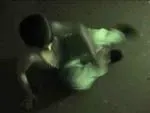Natalie Robertson / Scott Flanagan exhibitions
Written by

Cuz
by Natalie Robertson
Sampler Series:
Dr Don: or how I learned to stop worrying and love Helen
by Scott Flanagan
Opening: Wednesday 1st September, 5.30pm
Artist's floortalk: Thursday 2nd September, 12.30pm
Exhibition runs: 2nd - 25th September
For SCAPE 04, The Physics Room art project space has selected one national and one local artist whose individual practices variously explore aspects of historical and contemporary migratory movements within New Zealand and recent socio-political debates surrounding our national identity.Cuz
by Natalie Robertson
Sampler Series:
Dr Don: or how I learned to stop worrying and love Helen
by Scott Flanagan
Opening: Wednesday 1st September, 5.30pm
Artist's floortalk: Thursday 2nd September, 12.30pm
Exhibition runs: 2nd - 25th September
For SCAPE 04, The Physics Room art project space has selected one national and one local artist whose individual practices variously explore aspects of historical and contemporary migratory movements within New Zealand and recent socio-political debates surrounding our national identity.
Natalie Robertson is a photomedia artist whose work explores the cultural landscape of Aotearoa and the relationship between Maori and Pakeha practices of mapping and navigation. Her project at The Physics Room will present new video works under the title Cuz that map collaborative processes emerging from Robertson's family connections; historic relationships between Ngai Tahu and the artist's Ngati Porou iwi; and indigenous Canadian artists.
Scott Flanagan is a Christchurch artist with an experimental aesthetic and often politically informed practice. His project for The Physics Room, Dr Don: or how I learned to stop worrying and love Helen is an installation project centred on a large map of New Zealand cast in asphalt and moulded to the shape of a bell-curve. Flanagan sees the bell-curve and other tools of statistical appropriation as methods of "institutional norms" hindering the development and understanding of what Human is.